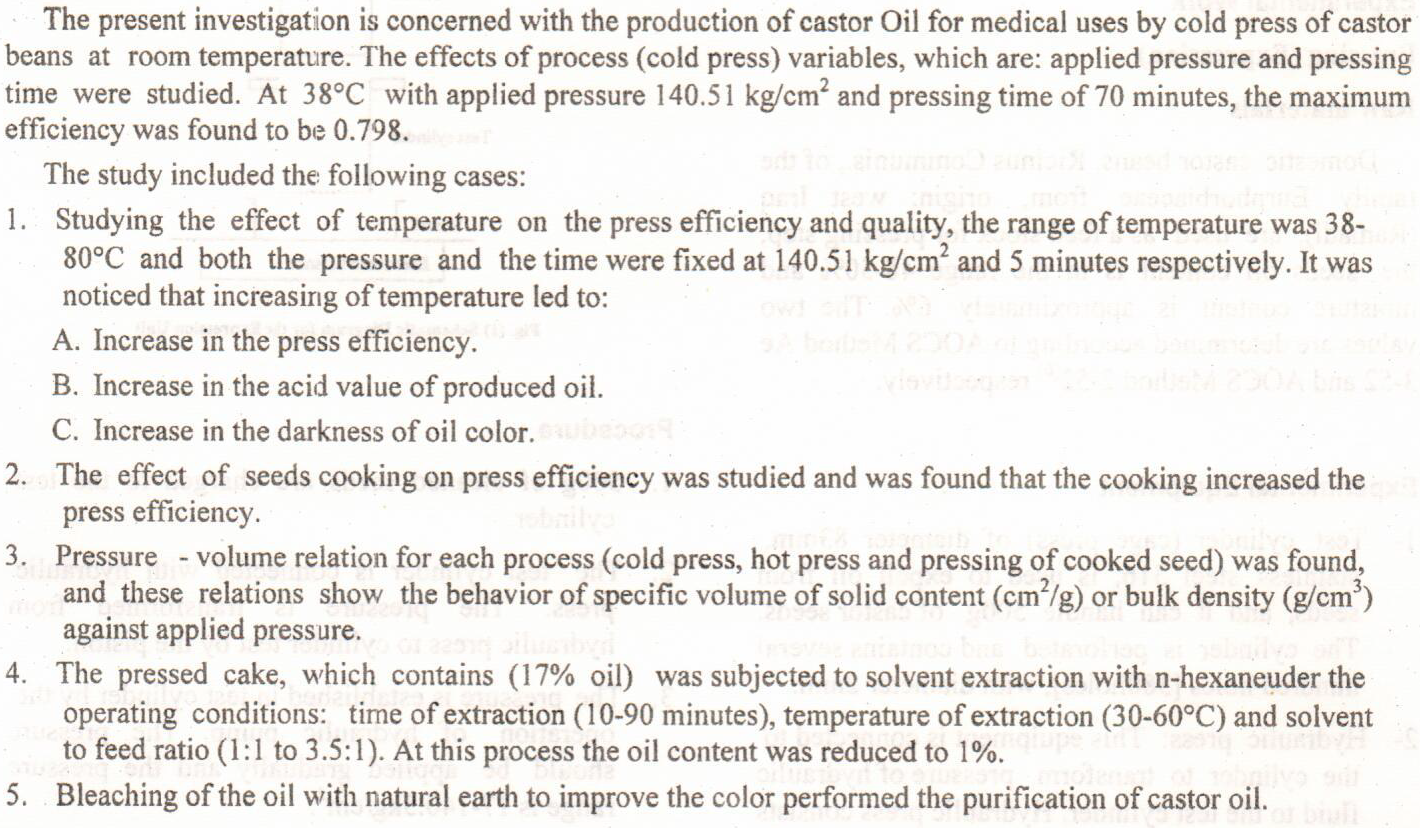
Nanofluid treatment of oil reservoirs is being developed to enhance oil recovery and increase residual trapping capacities of CO2 at the reservoir scale. Recent studies have demonstrated good potential for silica nanoparticles for enhanced oil recovery (EOR) at ambient conditions. Nanofluid composition and exposure time have shown significant effects on the efficiency of EOR. However, there is a serious lack of information regarding the influence of temperature on nanofluid performance; thus the effects of temperature, exposure time and particle size on wettability alteration of oil-wet calcite surface were comprehensively investigated; moreover, the stability of the nanofluids was examined. We found that nanofluid treatment is more efficie
... Show More (157)
(157)
 (150)
(150)
An investigation was conducted to suggest relations for estimating yield and properties of the improved light lubricating oil fraction produced from furfural extraction process by using specified regression.
Mass transfer in mixer-settler has been studied. Mass transfer coefficient of continuous phase, mass transfer coefficient of dispersed phase and the overall mass transfer coefficient extraction of light lubes oil distillate fraction by furfural are calculated in addition to all physical properties of individual components and the extraction mixtures.
The effect of extraction variables were studied such as extraction temperature which ranges from 70 to 110°C and solvent to oil ratio which ranges from 1:1 to 4:1 (wt/wt
... Show MoreCrude oil is one of the most important sources of energy in the world. To extract its multiple components, we need oil refineries. Refineries consist of multiple parts, including heat exchangers, furnaces, and others. It is known that one of the initial operations in the refineries is the process of gradually raising the temperature of crude oil to 370 degrees centigrade or higher. Hence, in this investigation the focus is on the furnaces and the corrosion in their tubes. The investigation was accomplished by reading the thickness of the tubes for the period from 2008 to 2020 with a test in every two year, had passed from their introduction into the work. Where the thickness of more than one point was measured on each tube in the sa
... Show More (6)
(6)
 (7)
(7)
The study aims at showing the effect of basil oil on the sensory properties of the laboratory biscuits. the results show the sensory valuation before and after the storage. the (A4) equation exceeds 15% of T exchange (3 , 4 , 5 g. basil 19 , 55 g . fats )in most of the studied sensuous qualities. Then, the (A5) equation of 20% exchange percentage (4.60g. basil oil + 18.40g. fats). Then, the (A3) equation of 10% exchange percentage (2.30g. basil oil + 20.70g. fats). Then the (A2) equation of 5% exchange percentage (1.5g. basil oil + 21.85g. fats). Finally, the control equation (A1) received the lower value of sensuous evaluation and general acceptance. Abstract differences also appeared at denotation level 0.05 between the (A2)
... Show MoreObjective: To find out the relationship between vaginal bleeding during third trimester and pregnancy outcomes. Methodology: A purposive sample is "Non-probability" of (100) women who had diagnostic vaginal bleeding during third trimester (27-40wk) of pregnancy, and who visited the Bint Al-Huda Hospital for the period from 15th Feb. to 17th May 2015.Validity and reliability of questionnaire are determined through pilot study. Descriptive and inferential statistical procedures were used to analyze the data, and the data were collected by using interview technique, constructed questionnaire has been desig
 (5)
(5)
In order to reduce the environmental pollution associated with the conventional energy sources and to achieve the increased global energy demand, alterative and renewable sustainable energy sources need to be developed. Microbial fuel cells (MFCs) represent a bio-electrochemical innovative technology for pollution control and a simultaneous sustainable energy production from biodegradable, reduced compounds. This study mainly considers the performance of continuous up flow dual-chambers MFC
fueled with actual domestic wastewater and bio-catalyzed with anaerobic aged sludge obtained from an aged septic tank. The performance of MFCs was mainly evaluated in terms of COD reductions and electrical power output. Results revealed that the C
There are serious environmental problems in all countries of the world, due to the waste material such as crushed clay bricks (CCB) and in huge quantities resulting from the demolition of buildings. In order to reduce the effects of this problem as well as to preserve natural resources, it is possible to work on recycling (CCB) and to use it in the manufacture of environmentally friendly loaded building units by replacing percentages in coarse aggregate by volume. It can be used as a powder and replacing of percentages in cement by weight and study the effect on the physical and mechanical properties of the concrete and the masonry unit. Evaluation of its performance through workability, dry density, compressive strength, thermal conduct
... Show More (2)
(2)
The aim of this research was to estimate the production function to measure returns to scale and distribution efficiency of resources used in the production of wheat. Cross sectional data used of a random sample of 130 farmers in Dhi Qar Province. The results of the quantitative analysis of estimating production function showed that the double logarithmic form was the best estimated model based on economic and statistical indicators. However, that form suffered from heteroscedasticity and autocorrelation, so the robust regression technique was chosen. Value of returns to scale was 0.89 and this indicates decreasing returns to scale. This means that production function is in the second stage of the function. The results of the dist
... Show More (1)
(1)
 (30)
(30)
 (25)
(25)
